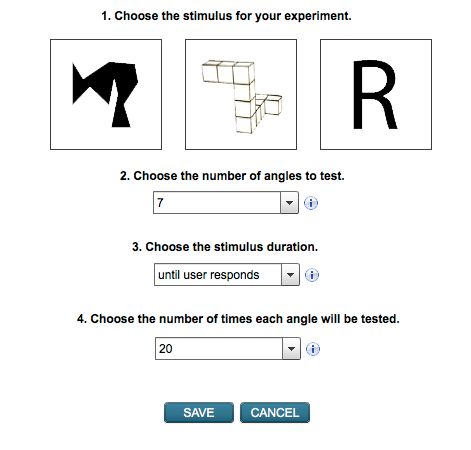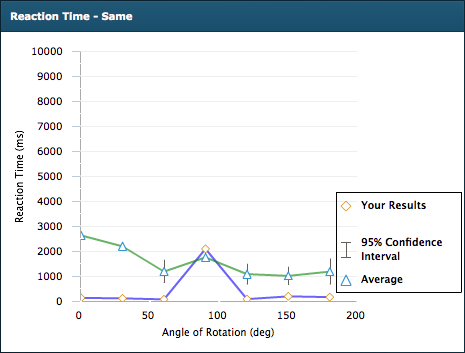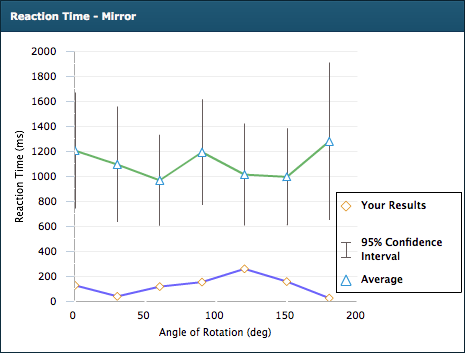Chapter 1. CogTK Experiment Prototype
1.1 Introduction
Mental Rotation
This experiment is a replication of one of the most important experiments in psychological history. For decades the study of mental images had been thought to be beyond the reach of science, and their very existence was questioned. The issue was how to find a method for developing rigorous measures that could indicate that mental images existed and explain how we used and manipulated them. The measures had to be clearly interpretable and repeatable by other researchers. Roger Sheperd, Lynn Cooper and colleagues developed this methodology which rotated two images relative to each other and measured how long it took for people to determine if the images were the same or mirror images. The results allow both a rigorous and replicable set of findings that enabled mental images to be examined for the first time in a replicable scientific study.
References:
Cooper, L. (1975). Mental rotation of random two-dimensional shapes. Cognitive Psychology, 7(1), 20-43.
Cooper, L., & Shepard, R. (1973). Chronometric studies of the rotation of mental images. Visual information processing Oxford England: Academic Press.
Metzler, J., & Shepard, R. (1974). Transformational studies of the internal representation of three-dimensional objects. Theories in cognitive psychology: The Loyola Symposium Oxford England: Lawrence Erlbaum.
1.2 Experiment Setup

This tab will look and function differently depending on whether a student or instructor is viewing it.
The instructor will set up the experimental paramaters she wants to use for her class. She can also decide whether or not her students should see the "Quiz" tab.
A student will see the options of using the class setup and taking the experiment himself, or setting parameters for running participants in his own version of the experiment.
1.3 Instructions

You will need to press the space bar to start the experiment. Afterwards a fixation mark will appear in the center of the screen. Please fixate on this mark. After a brief period of time, two images will be presented, one to either side of the fixation mark. These two images will either be the same or mirror images of each other. Your task is to decide, quickly and accurately, if these images are the same or mirror images of each other. You may respond by either clicking on the buttons below the images or using your keyboard.
1.4 Experiment

Click the button below to submit simulated data for the experiment:
1.5 Results
The following four graphs show your data plotted against data for the other 34 members of your class who have submitted data, as well as against data submitted by students from other classes. The first two graphs show reaction times for "Same" and "Mirror" responses, respectively (these data include only trials on which the response was correct), and the second two graphs show accuracy rates for "Same" and "Mirror" responses, respectively.
Click a button at right to download data from the experiment.




1.6 Quiz
Question 1.1
The variable that is compared between the two groups in the first part of this study is the:
| A. |
| B. |
| C. |
| D. |
Question 1.2
Which of the following of Tversky and Kahneman’s decision-making heuristics is tested in the current study?
| A. |
| B. |
| C. |
| D. |
Question 1.3
Which of the following of Tversky and Kahneman’s decision-making heuristics is tested in the current study?
| A. |
| B. |
| C. |
| D. |